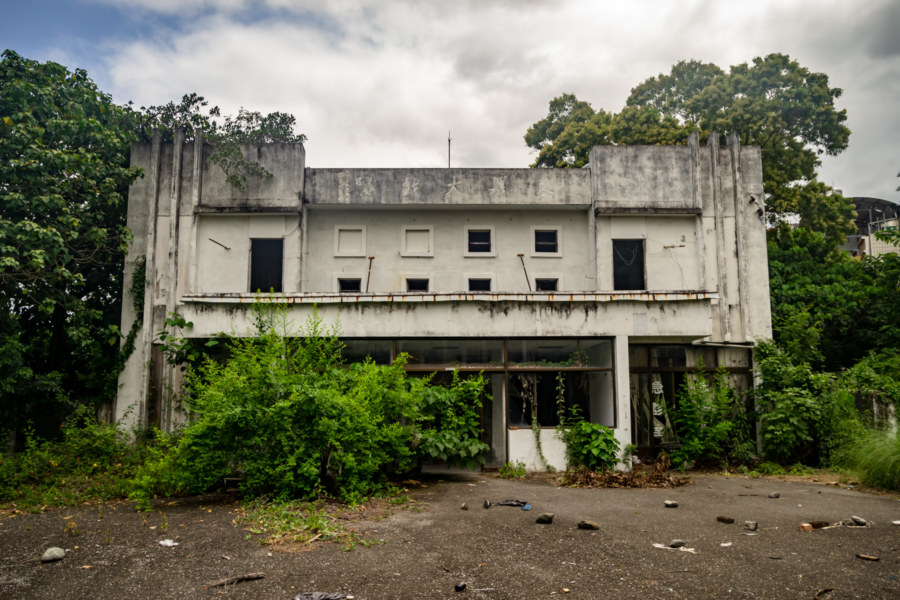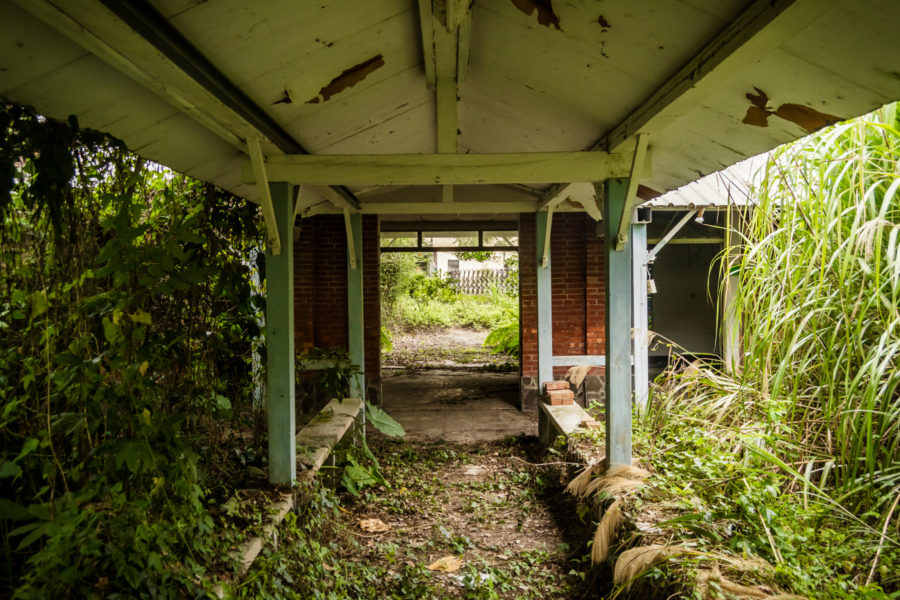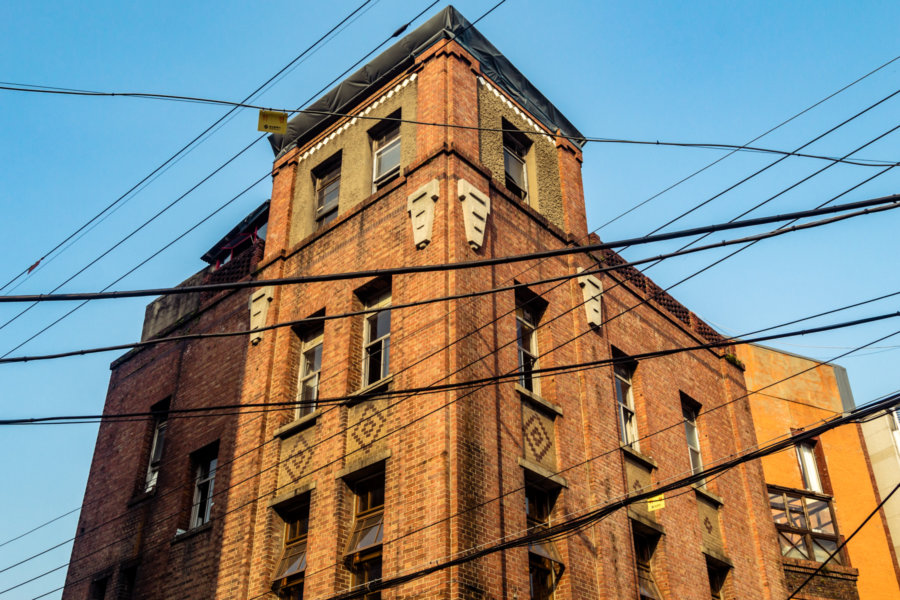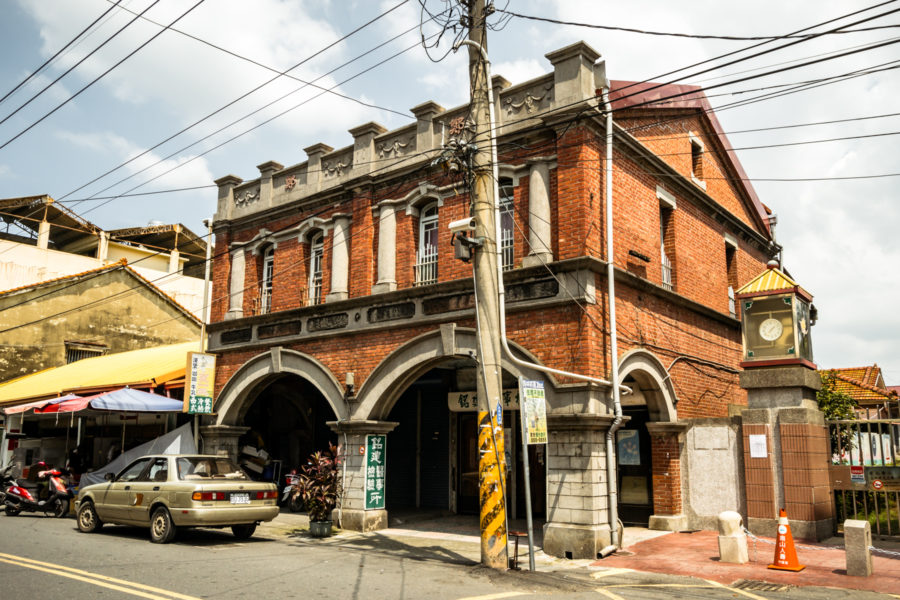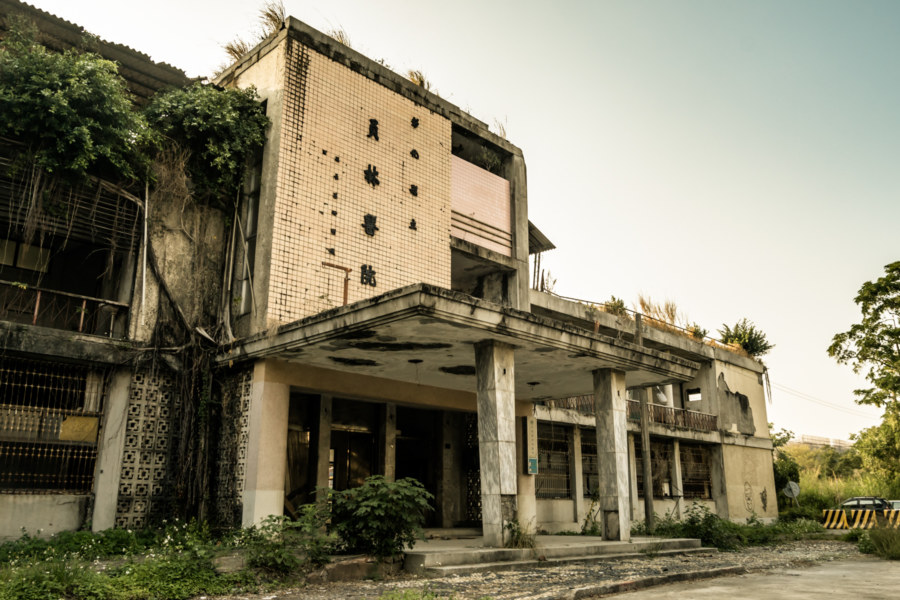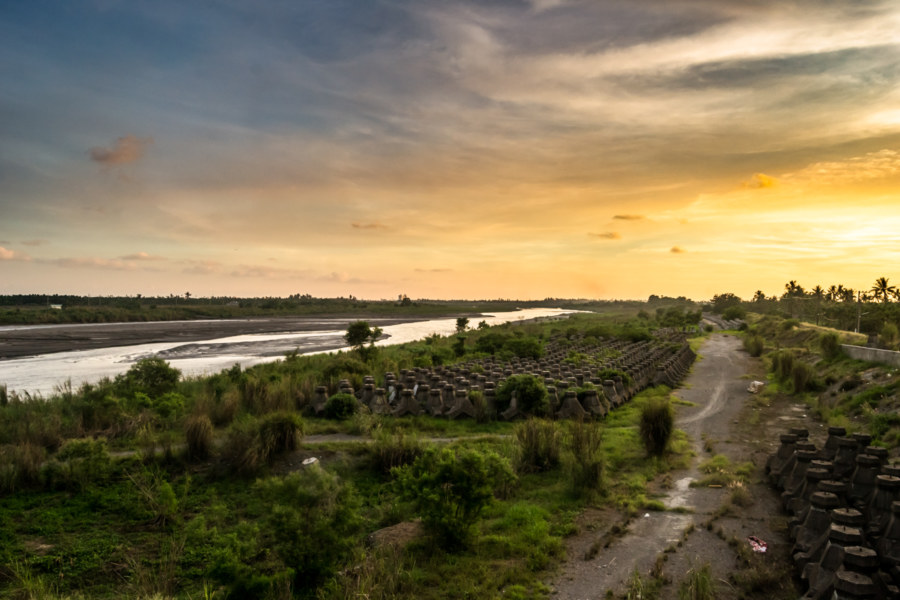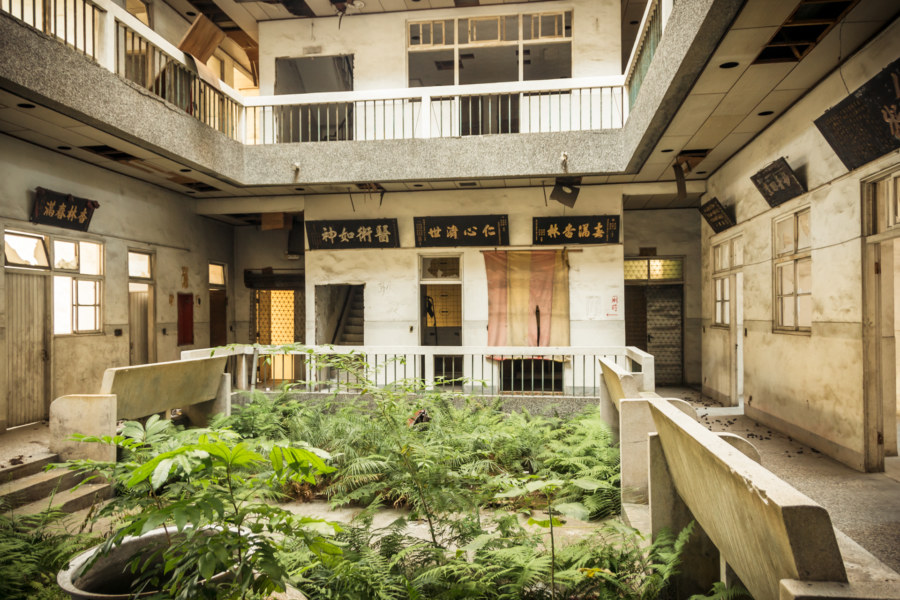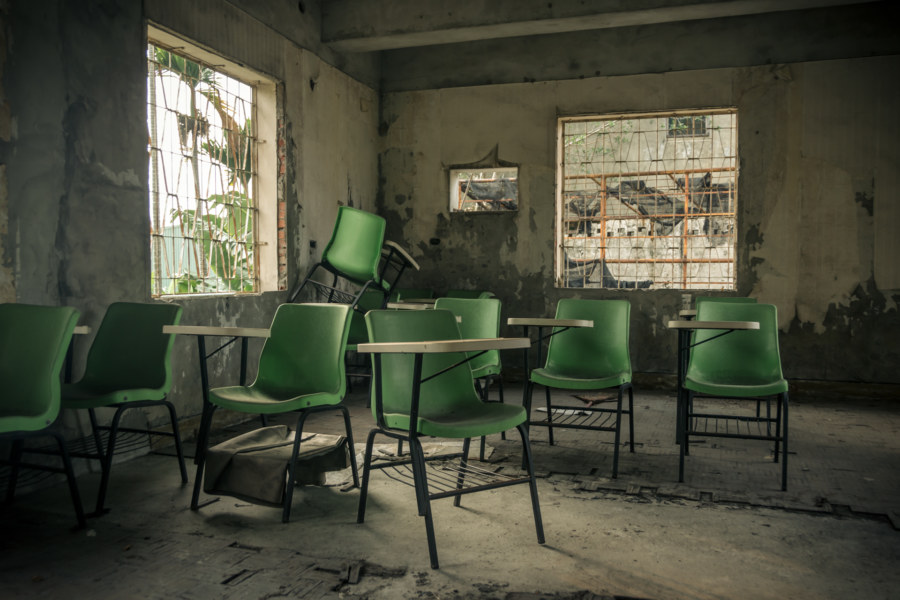Dōngxìng Theater (東興大戲院) is located in a small village in the outskirts of Taitung City, Taitung, at the southernmost extent of the Huadong Valley (花東縱谷). Not much is known about its history beyond whatever can be deduced by visiting the site, but it was almost certainly built in the late 1960s, around the same time as Jinxing Theater, located just down the street, and Zhonghua Theater in Guanshan, which has almost the same design. At some point it went out of business, probably in the 1980s, and was converted into a small rural hospital, a repurposing I’ve seen nowhere else in Taiwan.
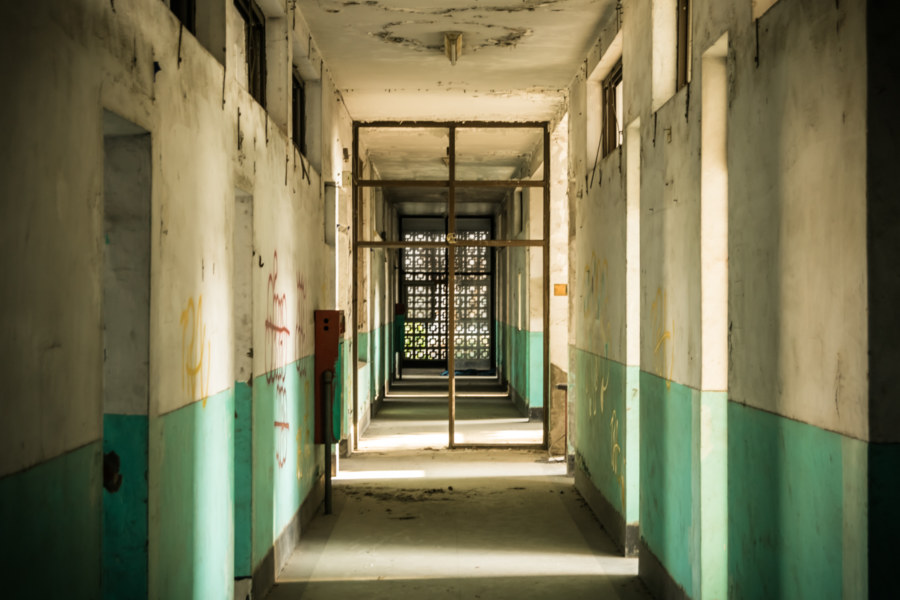
Hospitals, abandoned and otherwise.
Adjacent Terms
Puli Tuberculosis Sanatorium 埔里肺結核療養所
Tuberculosis remains the deadliest communicable disease in Taiwan, claiming approximately 600 lives per year, but great strides have been made in reducing its toll throughout the 20th century. Nearly 5% of the population were afflicted by the disease in the late 1940s—and with an annual mortality rate of 3 in 1,000, it was also among the leading causes of death of any kind in post-war Taiwan. The disease was especially prevalent among the Taiwanese Indigenous people of the remote mountainous interior, who simply couldn’t afford to see a doctor or purchase medicine (even if there were a clinic anywhere nearby).
Christian missionary organizations went to great lengths to expand access to medical services in the late 1950s, founding numerous clinics and sanatoriums in Indigenous territory all across Taiwan. In 1957 this particular tuberculosis sanatorium was constructed next to a secluded lake on the outskirts of Puli, Nantou, to provide free treatment and relief for people of the mountains. The next several decades saw great advances in healthcare in Taiwan and the sanatorium closed in 1980, its purpose fulfilled. It reopened as a Presbyterian retreat center and campground in the late 1980s and was ultimately abandoned to the elements sometime in recent years.
Baekje Hospital
The former Baekje Hospital is a heritage building in Busan, the second largest city in South Korea. Built in 1922 by Choi Yong-hae, a Korean living in Japan, it is located in Choryang, Busan’s historic Chinatown. It was the first private hospital in the city but only remained in business for about a decade before the building was repurposed. Over the years the former hospital has been used as army barracks, police station, Chinese restaurant, wedding hall, and more. This was even the home of a consulate for the Republic of China (now generally known as Taiwan) at some point, probably long before diplomatic recognition ended in 1992.
Postcards From Ershui 二水明信片
Ershui is a rural township located in the southeastern corner of Changhua, bordering Yunlin and Nantou. Ershui Station 二水車站, constructed in 1935, is the primary point of transfer between the Main Line 縱貫線 of the Taiwan Railway Administration (TRA) and the Jiji Line 集集線, a tourist railway leading into the interior. Ershui, which literally means “two water”, is named after the Bābǎo Canal 八堡圳, an extensive system of artificial waterways still responsible for irrigating much of the Changhua Plain 彰化平原 three centuries after it was devised. During the Japanese colonial era this small town prospered as a center of woodworking while farmers in the countryside cultivated bananas, grapes, guava, and tobacco, among other crops. Nowadays it is mainly known as a sleepy stopover on the way to parts beyond—but a closer look will reveal several points of interest for anyone curious about Taiwanese history, architecture, and vintage style.
Yuanlin Hospital 員林醫院
Despite having spent a lot of time in Yuanlin, a mid-sized city in central Changhua, Taiwan, I have only recently begun to explore some of its more famous ruins. Among these is Yuanlin Hospital 員林醫院, formally the Changhua County Yuanlin Hospital 彰化縣立員林醫院, originally built in 1963 and operational until the the turn of the millennium. Nowadays it is one of the more notorious abandoned places in central Taiwan, where it is regularly featured in news reports, particularly around Ghost Month 鬼月. Taiwanese media engage in an annual outpouring of overly sensationalized stories about haunted places—and hospitals, as liminal spaces of birth and death, often appear in such reports, complicating research into the real story of what went on.
Southern Taiwan Ride 2015: Pingtung City to Fangliao
After spending a day riding around Pingtung City I was ready to hit the road again. With no specific destination in mind—only an intention to head in the direction of Hengchun, far to the south—I checked out of the vintage homestay I lodged at the previous night, stopped at Eske Place Coffee House for a delicious and healthy vegetarian breakfast, changed into cycling wear, and exited the city to the east. I knew almost nothing about where I was headed or what I might see on the third day of my southern Taiwan ride in 2015. I only had one stop planned in advance: a hospital in Chaozhou rumoured to be abandoned. I didn’t know it at the time but I would spend almost the entire day riding through the historic Hakka belt of Pingtung.
Xinglin General Hospital 杏林綜合醫院
Xìnglín General Hospital 杏林綜合醫院 is perhaps the most famous ruin in downtown Tainan, Taiwan. It opened for business in 1975 as the largest hospital in the city and catered to the burgeoning middle class during the boom times of the Taiwan Economic Miracle. In 1993 the hospital shut down after being plagued by a number of scandals involving fraudulent records, medical malpractice, and allegations of wrongful death. Ongoing legal battles and fragmented ownership have left the building abandoned and neglected since then.
Wufeng Minsheng Clinic 霧峰民生診所
On the way back from the 921 Earthquake Museum 九二一地震教育園區 in early 2014 I noticed an abandoned building at the side of the highway in rural Wufeng. Stopping to investigate, at first I assumed it must have once operated as a bǔxíbān 補習班, or cram school, a common feature of the social landscape here in Taiwan, but that initial hypothesis turned out to be completely wrong. Years later it was brought to my attention that this was originally Mínshēng Clinic 霧峰民生診所, the office of a country doctor by the name of Lín Péngfēi 林鵬飛. He passed away several years ago, leading to the abandonment of the clinic. More recently it was purchased by local farmers, completely renovated, and has reopened as a small museum and community center, the Wufeng Minsheng Story House 霧峰民生故事館.
Exploring VGH
My first sublet in Vancouver after the move was located next to the Vancouver General Hospital (VGH) complex. Since I was regularly cycling through the hospital grounds I figured a short mission to photograph some of its more intriguing structures was in order. Below you will find a few external shots of buildings and the steaming vents at the VGH power plant.
